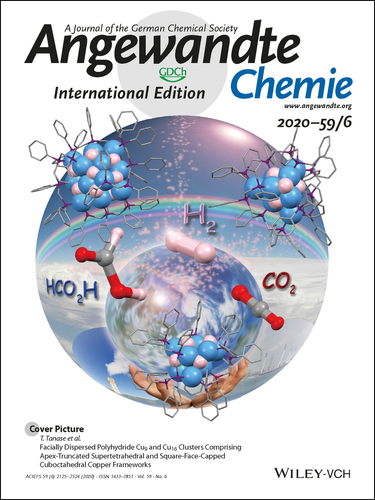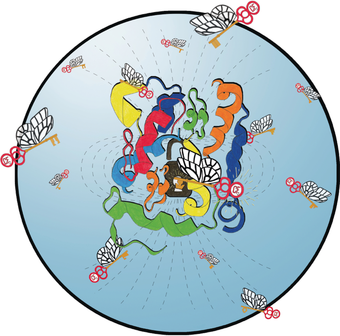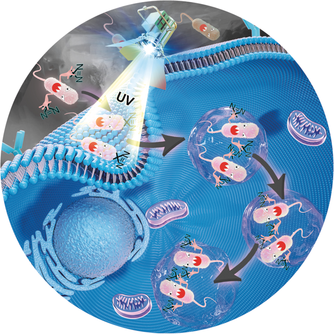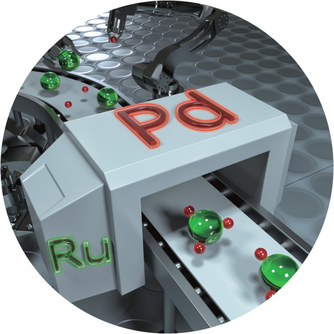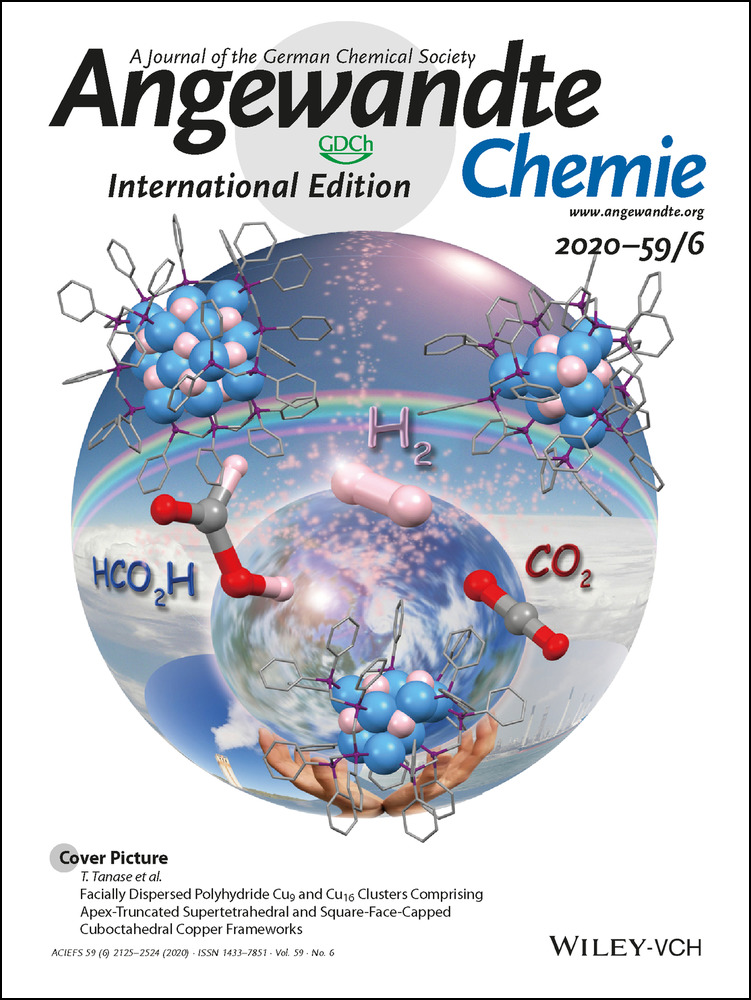Cover Picture: Facially Dispersed Polyhydride Cu9 and Cu16 Clusters Comprising Apex-Truncated Supertetrahedral and Square-Face-Capped Cuboctahedral Copper Frameworks (Angew. Chem. Int. Ed. 6/2020)
Graphical Abstract
Catalytic hydrogenation of CO2 to formate is promoted by copper hydride clusters. Cage-type copper hydride clusters prepared by using a tetraphosphine ligand, dpmppm, can have apex-truncated supertetrahedral {Cu9H7}2+ and square-face-capped cuboctahedral {Cu16H14}2+ frameworks, or an unsymmetrical {Cu8H6}2+ structure. As reported by T. Tanase and co-workers in their Communication on page 2262, the kinetically trapped {Cu8H6}2+ species promotes catalytic hydrogenation of CO2 to formate in the presence of strong base.
Catalytic hydrogenation of CO2 to formate is promoted by copper hydride clusters. Cage-type copper hydride clusters prepared by using a tetraphosphine ligand, dpmppm, can have apex-truncated supertetrahedral {Cu9H7}2+ and square-face-capped cuboctahedral {Cu16H14}2+ frameworks, or an unsymmetrical {Cu8H6}2+ structure. As reported by T. Tanase and co-workers in their Communication on page 2262, the kinetically trapped {Cu8H6}2+ species promotes catalytic hydrogenation of CO2 to formate in the presence of strong base.
Chemical Libraries
Lithium-Ion Batteries
Chemical Proteomics
Total Synthesis



